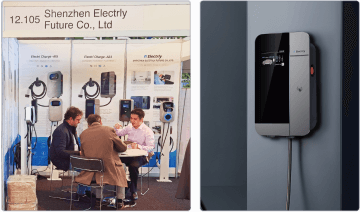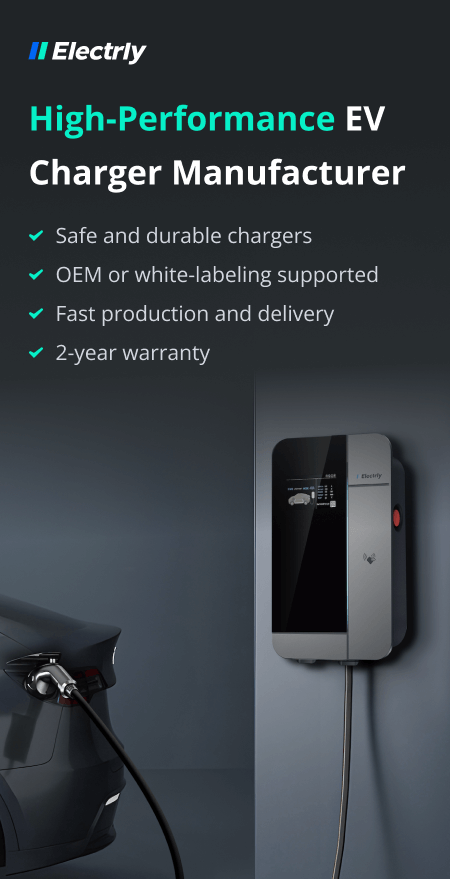Electric vehicles are rapidly transforming the car industry and redefining the way we think about personal transportation. In addition to changing driving dynamics, EVs have also altered the way we charge and use our cars. While public charging stations are available, home charging stations have become a popular and convenient option for EV owners to overcome range anxiety.
In this article, we will provide a comprehensive guide to installing an electric charging station, covering everything you need to know.
Why Should I Install an Electric Car Charging Station?
There are numerous benefits to adding a charging station to your site, including:
- Incentive credits: You may be eligible for rebates, tax credits/exemptions, grants, and loans to reduce equipment or installation costs.
- Additional revenue: In a public garage, for example, offering charging services can attract EV drivers and provide cash flow to offset the extra energy use.
- Value-added amenity: EV charging stations are a value-added amenity for employees, residents, and traveling guests who drive electric vehicles.
- Increased business traffic: Offering charging stations at retail or dining centers allows for a captive customer to shop or dine, perhaps just a little bit longer, while their EV battery gets topped up.
- Environmental benefits: Widespread and convenient charging infrastructure encourages the adoption of EVs as a viable alternative to internal combustion engine vehicles, which contribute significantly to carbon emissions and air quality.
Overall, installing an electric car charging station can bring financial, promotional, and environmental benefits to your business or property, making it a worthwhile investment.
What Are the Different Types of Electric Car Charging Stations?
Electric car charging stations come in three main types. The first two are the most commonly used and can be installed in homes. The third type is the most powerful, but it is designed for industrial users and cannot be installed in residential settings. Here is a detailed explanation.
Level 1 Charging
The most affordable type but also the slowest one The Level 1 charger is equal to plugging your car into your home power grid. Yes, it will provide you with cheap charging, but only at a 3 to 5-mile-per-hour rate, which is inconvenient.
Level 2 Charging
This option requires professional installation, but it is worth the investment since Level 2 can add up to 40 miles per hour. This type of electric charger uses 240-volt electricity at 30 amps. It can be found at public charging points or homes.
Level 3 Charging
By far the fastest charging available, with the capacity to add up to 100 miles in just one hour. However, due to the high power required, it requires industrial-strength electricity stations, which are not available to private customers. They are also known as "superchargers" due to their power and capacity.
How to Install an Electric Car Charging Station?
After deciding what type of electric car charging station perfectly suits your needs, the next logical question is how to install it in your home or workplace. Well, the installation processes range from very easy to very demanding. Here is how you do it.
Level 1 Charging Installation
There is no real installation process with Level 1 type of chargers. You just plug your vehicle into the wall socket and charge it through the standard 120-volt system. There are no additional costs or requirements.
Level 2 Charging Installation
Since Level 2 uses 240-volt power, which is double the standard power grid in your home or workplace, installing this type of charger requires a different approach. First of all, it requires a particular charging device that attaches to the power grid and a "double-pole" circuit breaker, 4-strand cables, and other components.
Since the installation process is complicated, it is highly recommended not to do it yourself but to use a professional installer. Also, you should check the requirements of the device and whether or not your power grid can accommodate a Level 2 charging installation.
Level 3 Charging Installation
The Level 3 charger is by far the most complicated and expensive to install. Since those devices require industrial levels of power and infrastructure, they are connected to large-scale businesses. If you opt for such a significant investment, you will need a precise business plan, estimates, and professional companies to perform the necessary construction.
You will also need to consult a local city council to see if such construction is allowed in that location. However, the Level 3 installation will provide you and your customers with the most efficient levels of charging. For example, the Tesla Supercharger network, which is a Level 3 charging station, can add almost 140 miles of range to your battery in just 30 minutes.
What Are the Best Places to Install an EV Charging Station?
When we talk about the exact locations of the chargers, the first thing to consider is the frequency and convenience. Places like business parks, offices, shopping malls, and similar busy areas are excellent places for installing chargers since the number of people working or passing through those areas is large.
The same goes for the apartment block, condos, large parking garages, entertainment centers, and stadiums. Wherever there is a large number of people, there is a need for EV charging stations. Make sure that the charging spots are easily accessible and that there are enough of them to meet the demand.
What to Look for When Choosing an Electrician to Install Electric Car Charger?
With the rising number of electric vehicles in everyday use, the need for electric chargers at home or place of work has risen, too. This means that more and more companies are offering services for installing and maintaining electric chargers. But what to look for when choosing the electrician to install it for you?
First of all, you want an experienced technician who has a proven track record of installing and maintaining similar devices. Somebody who knows the ins and outs of various types of chargers can give you usable advice and has in-depth knowledge of the local power grid. Also, you'll need somebody who knows if there are any government grants and initiatives which can keep the cost of owning an electric charger down.
Second, since the electric charger is an integral part of the EV landscape, always look for somebody who can guarantee the device's quality and installation. You should go for something other than the cheapest electrician or company around and look for the best and most trustworthy.
Conclusion
Even though there is no actual installation process for Level 1 chargers, Level 2 and especially Level 3 demand preparation and a specialized approach. However, by upgrading to Level 2 or 3, your EV charging point is significantly more powerful and can provide much more in terms of faster times and more miles. So, investing in those charging devices is smart and will pay dividends, regardless if you are installing them for private or commercial use.


